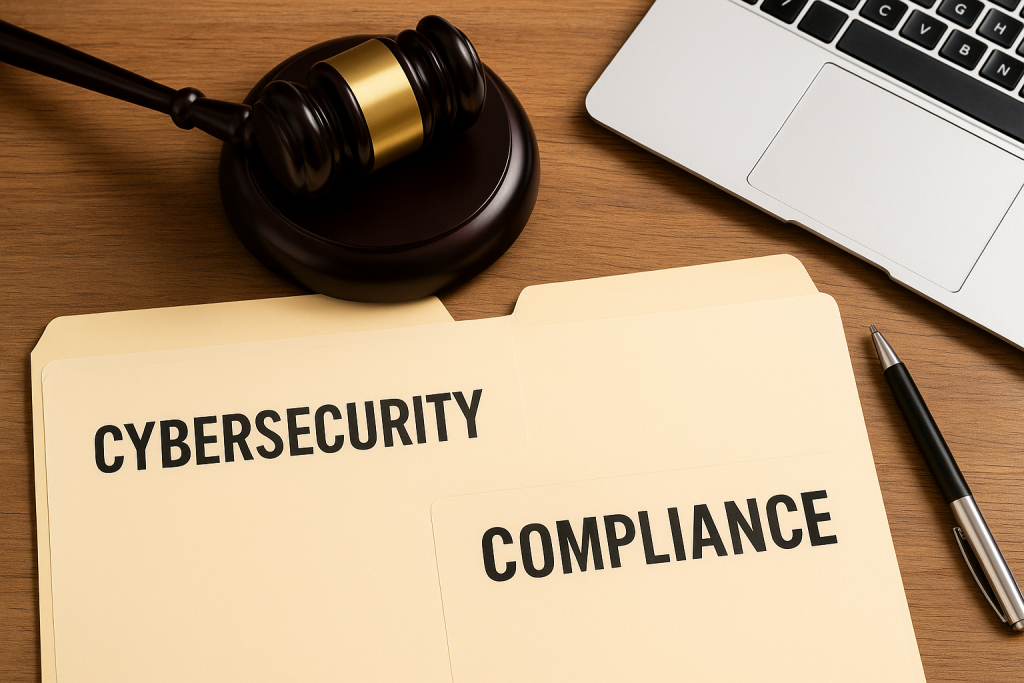
When navigating digital risk and regulation, two terms often come up: cybersecurity and compliance. While closely related, they are not the same—and understanding the difference is critical for California businesses aiming to stay secure and meet legal obligations.
Let’s break down what each term means, how they overlap, and why both are essential to a strong cyber strategy.
🔐 What is Cybersecurity?
Cybersecurity refers to the practices, tools, and technologies used to protect your networks, devices, data, and systems from unauthorized access, cyberattacks, and digital threats. It includes:
- Firewalls and antivirus software
- Employee awareness training
- Multi-factor authentication (MFA)
- Secure system architecture
- Incident response planning
Cybersecurity is proactive and ongoing—it evolves as threats evolve.
📋 What is Compliance?
Compliance means adhering to laws, standards, or industry regulations that govern how data must be protected. In California, that includes:
- CCPA (California Consumer Privacy Act)
- CPRA (California Privacy Rights Act)
- Industry-specific frameworks like HIPAA, PCI DSS, and FERPA
Compliance is typically reactive and measured—it’s about meeting minimum standards set by regulators.
🔁 How Cybersecurity and Compliance Intersect
- Compliance Sets the Minimum: Most laws establish a baseline of data protection. Following them helps avoid fines and lawsuits.
- Cybersecurity Goes Beyond the Minimum: Being compliant doesn’t always mean being secure. A strong cybersecurity program is proactive and adapts to new threats.
- Compliance Demonstrates Accountability: It shows clients, donors, partners, and regulators that you take security seriously.
- Both Serve the Same Goal: Protecting sensitive information and reducing risk.
🧠 Quick Summary: Key Differences
- Cybersecurity = Protect your business from threats
- Compliance = Follow legal and industry standards
- You can be compliant but still vulnerable
- You need both to build trust and avoid risk
⚠️ Why This Matters for California Businesses
California’s data privacy regulations—especially CCPA and CPRA—are among the strictest in the country. Small businesses, nonprofits, schools, and public agencies are increasingly being held accountable for:
- Securing personal information
- Responding to consumer data requests
- Preventing and reporting data breaches
Ignoring cybersecurity and compliance can lead to fines, reputational damage, and lost business. Integrating both ensures:
- Legal coverage
- Operational resilience
- Customer and stakeholder trust
💡 The Bottom Line
Compliance tells you what you must do.
Cybersecurity focuses on how you protect your systems and data.
They’re different, but they work best together.
For California businesses, especially in a post-CPRA world, understanding this relationship is more than academic—it’s essential.
📌 Related Resources
- CCPA Compliance Center
- Compliance and Regulations: Navigating Cybersecurity Laws for California Businesses
- Compliance Corner – Full Resource Hub
Need help understanding how compliance fits into your cybersecurity strategy? Visit our Compliance Corner to get checklists, templates, and plain-language guides.

